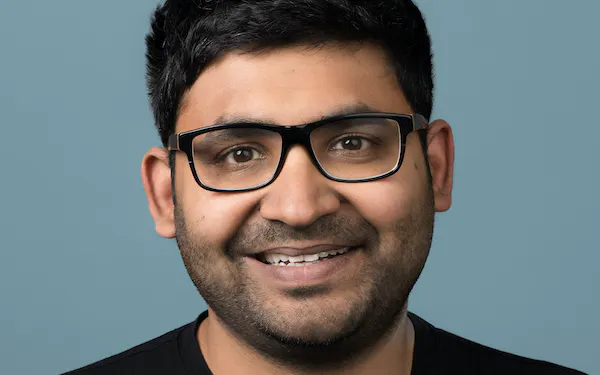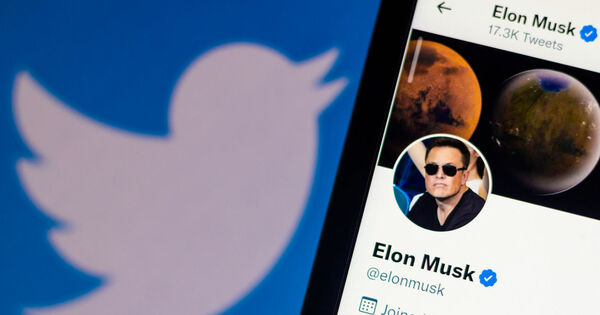Elon Musk has taken over as CEO of Twitter, Inc. and has decreed the “firing of the entire board of directors. This is not mere arrogance or greed for power, but a calculated strategy. Behind the scenes, there is a “certain goal” that can only be realized if the three companies that Mr. Musk manages, Tesla, SpaceX, and Twitter, come together.
Musk becomes CEO of Twitter and fires the entire board of directors.

The developments surrounding Twitter are becoming more and more frenetic. It was reported that Elon Musk’s acquisition of Twitter was settled after a round of litigation, and that he completed the acquisition on October 27, firing the former CEO and CFO on the same day.
Not only that, but documents filed by Mr. Musk with the SEC on October 31 revealed that nine Twitter directors had already been removed and that Elon Musk is now the sole director of the company.
Musk has reportedly been concerned about Twitter’s low profitability for some time and is expected to begin a round of significant layoffs. At the same time, dissatisfaction with the company’s rules for checking and freezing fraudulent accounts has led to a new monitoring system for tweets, and service changes are likely to proceed, such as charging for hashtags and recognition badges.
Whether they proceed with a large-scale restructuring or make major changes to the content of their services, internal resistance will be an obstacle. In this sense, the general view is that, first of all, Mr. Mask has taken full control of the company.
At the same time, there is a conspicuous behind-the-scenes view that there is a lust for power that every entrepreneur has. If the front reason is to promote reforms at Twitter, which has been suffering from a slump in performance, the back reason may be that he has a strong sense of power and wants to take over a large old organization and run it as he sees fit.
So far, this is the same as what is reported in the economic media, but as a long-time observer of Elon Musk’s behavior, I can’t help but think that there is more behind the scenes to this story. I hope you will read the article from here on, assuming that it is a rather sharp guess by an economic commentator who specializes in predicting the future.
Tesla, SpaceX, and Twitter are integral to Musk’s vision
Elon Musk may appear to be a maverick entrepreneur, but there is a consistent reason for his actions. Mr. Musk does not waste his time on useless or meaningless things.
When Mr. Musk buys Twitter and reforms it, he will have to devote a tremendous amount of energy, both as a manager and as an investor. With SpaceX’s space business starting to take off and Tesla in a fierce global battle with Chinese automakers for the top spot in terms of sales volume, it may seem foolish at first glance for Musk to spend his valuable time on Twitter.
However, if one sees Twitter as a key component of Musk’s vision, which is linked to SpaceX and Tesla, the picture looks quite different.
With the announcement of the launch of Level 4 self-driving cars in China as the next generation automotive industry trend, and unmanned robo-taxis beginning to operate in Phoenix, Arizona, USA, the industry is reaching a milestone in the shift to EVs and self-driving cars.
The next major battleground for the automotive industry will then shift to “connectedness. When Japanese people think of connected cars, commercials often conjure up images of car navigation systems connecting to the Internet and contact centers to make car services more convenient, but the actual main battleground goes much deeper.
Simply put, the main battleground of connectedness is IoT, or the “tweeting” of car parts.
The era of “tweeting” car parts is coming.
For example, this is the future.
In the first stage, drive recorders may start tweeting themselves, as in the drive recorder video that is often retweeted on Twitter.
For example, “I am a drive recorder, and I just had an accident right in front of me, can you please take a look? (Note: The language in which IoT components tweet is actually different from our language. (Note: The language in which IoT components tweet is actually different from our language, and the tweets of components are not posted on Twitter. (Note: The language in which IoT components tweet is not actually our language, nor are their tweets posted on Twitter.)
In the second stage, the parts start tweeting to each other inside the car.
“Maybe the brakes are being pressed too hard?
“That’s right. I have pads, and they are getting worn out.
This one is the engine, but the engine brake isn’t working. Maybe there is something wrong with the control unit.
Anyway, I’ll alert both the driver and the dealership.
The system will work in cooperation with both the driver and the dealership.
In the third stage, the cars will talk to each other.
“If the car is not getting good fuel economy in automatic mode, that’s the car’s fault, isn’t it?
“Another car, same model, seems to be losing fuel mainly when it accelerates.
What about other cars?
I don’t accelerate fast in my car. I don’t think Tesla as a whole should do that.
Japanese people tend to think of IoT in terms of individual parts being connected to the automaker’s mother computer and reporting defects. However, the actual IoT is closer to the future if we envision a SNS-type network in which parts tweet and spread information to each other, drawing attention to the defects that receive the most retweets.
In the fourth stage, cars and the government will be connected.
The fourth stage would connect cars with the government: “This intersection always has an unnecessarily long straight signal and a too-short right-turn signal.”
500 cars liked and retweeted.
It’s time for the government to act.
It’s like that.
In Japan, cell phones are often out of range in mountainous areas, and this is even more true in the U.S., with its large land area. In such cases, navigation via space is also possible using SpaceX, which is managed by Mr. Musk.
Stolen car, run across state lines into the desert!
Don’t worry. I’ll take care of it.
It would be something like that.
Basically, in the era of connected cars, the internal parts of cars, the parts of the same manufacturer, and even the big data information transmitted from these countless cars will all be connected and analyzed in an effective way to improve the entire mobility society.
This is not a story for the not-so-distant future. The automotive industry will shift to such a phase in the future between 2025 and 2030.
In the future, Tesla car parts will “tweet” to each other using a communication network, and AI will learn from them.
Tesla, led by Elon Musk, has already made three strategic moves toward such a future before the acquisition of Twitter.
(1) Vertically integrated manufacturing system
(2) Consolidation of ECUs (Electric Control Units)
(3) Self-contained charging infrastructure
These three points are said to be the pitfalls that will cause the Japanese car camp to drop out when the entire auto industry moves to the next phase.
Japanese cars are designed and manufactured by a pyramid of subcontractors, with the horizontal division of labor. In contrast, Tesla designs and produces its cars as much as possible so that they can be produced by a single Tesla company. Therefore, Tesla’s components are made to be easily crushable with each other.
The second point, the integration of ECUs, is actually the weakest point of Japanese cars. Japanese cars have a design concept that makes it very difficult for parts to work together. This is because they are equipped with more than 20 control units that were developed separately by each component manufacturer to control their own area of components. Right now, this is the reason for the “semiconductor shortage,” and it is dragging down our business performance. However, in the age of connectedness, this will become an obstacle to cooperation, as in the case of Tesla, “the more boatmen, the more boats, the more mountains.
On the other hand, in the case of Tesla, the car is controlled by a very small number of ECUs designed by the company itself (i.e., no black box). This makes it relatively easy to upgrade the OS that controls the car. This is not by chance, but because we have been thinking about where the next generation of cars will reach from the beginning.
And the fact that Tesla is investing in its own network of charging facilities from the outset means that the company has factored into its vision the eventual function of connected EVs as the city’s power infrastructure (energy grid).
This is where Twitter comes in as the fourth weapon in Tesla’s arsenal. In the coming IoT era, Tesla vehicle components will use a communications network to send and receive countless tweets and retweets from each other.
The vast majority of that information will be junk (meaningless information), but a small portion will be very important information for the mobility society. In an era when the companies that can find diamonds in the desert sand will win, what will be needed is the ability of companies to dominate big data, in other words, the quantity and quality of engineers and the money they can put into AI and cloud computing.
And that’s what Elon Musk got for just $44 billion.
Dismissal of the entire board of directors is not arrogance, but strategy.
Let’s imagine that you are an executive at Twitter.
What would you think if a new person came in from the outside and announced, “Within three years, we’re going to transform Twitter into a social networking site that’s perfect for parts tweeting at each other? You would probably be “stunned.
That is why Elon Musk probably dismissed all of the board members first. It is expected that the legal and administrative departments will be the ones most likely to fire employees. I think this is another milestone that will fall on our stomachs if the role of the company is to be remade into something completely different.
Now, this is just my personal guess as an expert in predicting the future. The media coverage of the Twitter takeover by Elon Musk seems to be seen primarily as a millionaire’s arrogance against free speech and the public nature of the Internet.
Will the result be as it seems a few years from now, and will Mr. Musk reflect on it as a “defeated general,” or will the results of the acquisition become visible to all in a way that the media did not expect, and will he reign supreme in the new automobile industry as a “winner-takes-all”?
Wouldn’t it be interesting to watch the future development of the Twitter acquisition from such a perspective while speculating on the inside story behind the story?


コメント